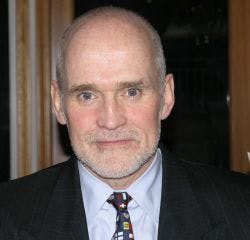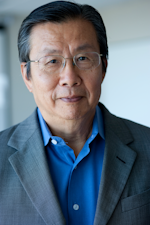Business Forum: Professional society in our photonics ecosystem

This is the second in a series of interviews of CEOs of our professional societies to give us a better understanding of the ecosystem of our industry. It is a pleasure for me to chat with Eugene Arthurs, someone I have known for more than 30 years.
Arthurs is CEO of the International Society for Optics and Photonics after joining SPIE as executive director in 1999. Prior to this, he was president and CEO of Cleveland Crystals (CCI); before that, he was with Quantronix and Oriel.
Arthurs received his B.Sc. with honors in Physics and his Ph.D. in Applied Physics from Queens University Belfast in Ireland. He taught a M.Sc. class in optoelectronics at Queens and conducted research at the Imperial College of London before he drifted to the business side.
Milton Chang: SPIE has improved significantly since you became the CEO 15 years ago. What changed?
Eugene Arthurs: Making progress from a good foundation may be a better description. Joe Yaver and Jim Pearson set the stage, and we have grown in part because the field has grown. Photonics is making a greater impact in so many aspects of life.
MC: Your business background must have made a difference.
EA: We are like a business and the customer is everything. It is in our DNA to be restless and to practice Kaizen, or continuous improvement. Many of our staff also have business backgrounds and hold me and each other to high standards. Survival depends on our being receptive to new ideas and moving quickly into newer applications. Andy Grove’s book Only the Paranoid Survive is a reference for us.
MC: I also noticed the majority of the SPIE directors are from industry. Is that by design?
EA: SPIE has always sought to have a balanced leadership with people from industry, academia, and the government sector. It is increasingly difficult to get top people from industry that can make time for a professional society. We work hard at that—so yes, it is by design.
MC: How would you sum up the purpose of SPIE?
EA: We see our role as bridging science and applications to real-life deployment. We have always emphasized applications and commercialization more than most professional societies. We know that science is key to all aspects of the innovation model and science can also feed off the innovation process.
MC: All the professional societies seem to put a great deal of emphasis on developing membership overseas. Why?
EA: It’s where the growth is! We lose money in many of our global activities, but we see it as an investment in the future of the technology. We do it as a mission of the society, to be genuinely philanthropic for global benefit. Globally, SPIE tries to facilitate communication to advance optics and photonics. Who cares what part of the world the cure comes from if one is afflicted with a disease?
MC: It is true that the rest of the world is catching up.
EA: The reality has shifted from U.S. dominance in science to science being a global enterprise. For much of photonics, U.S. brands are no longer recognized as the best. I once had an RCA television, but nowadays? We see fewer young people born in the U.S. who dream of becoming engineers. It is rare for top-notch people to take up manufacturing engineering, and this is in a nation that built its economy on manufacturing leadership. This problem seems to be associated with wealthy countries.
MC: Recently, the United Nations (UN) General Assembly proclaimed 2015 as the International Year of Light (IYOL) and Light-based Technologies. What’s the significance of that?
EA: The contribution of light to life, to health, to energy, and to the quality of life we enjoy in this era of ubiquitous displays run by laser-written chips and fed by the photon-powered Internet has to be recognized worldwide. SPIE is working with other societies, including OSA and IEEE Photonics Society, to help make decision-makers aware of our contribution, and we need them to fund science and work to re-establish a healthy innovation ecosystem.
MC: The only concrete action planned both for IYOL and the National Photonics Initiative (NPI) I hear is “to channel more funds to our field.” What about modifying our own behavior as a group?
EA: The IYOL will be a worldwide infomercial for light, reaching more of the public and more individuals who hold the economic levers worldwide. The NPI, on the other hand, has a major emphasis of bringing together government, academia, and industry to get more return from the currently incoherent national investment in photonics. We’d also like to see more focus on the Grand Challenges identified by the National Research Council to really affect lives and shape the future of humanity. SPIE has been stepping up its efforts to bring together the researchers, industry, and the investors.
MC: What are the low-hanging-fruit action items that are within our grasp?
EA: We should agree on a set of North American Industry Classification System (NAICS) codes for photonics products. Companies exhibiting at Photonics West used more than 160 NAICS codes with wide dispersion. Since these codes are used by economic bodies to evaluate an industry, trade, jobs, etc., we do not appear as a significant industry to get attention. Another thing that comes to mind is the use of the “impact factor” or the number of citations to rate academic publications. This practice actually drives academic researchers toward esoteric science or technology because scientific and technological publications get more citations than engineering work. This works against innovation just as governments everywhere are demanding more innovation from academia. Broader issues are the R&D tax credit, the Science, Technology, Engineering, Math (STEM) pipeline, the STAPLE Act (immigration of PhDs), the COMPETES Act, Export Control, etc. We must keep on pushing for progress in structures that favor innovation.
MC: Which are the areas of photonics that offer the greatest potential?
EA: Biophotonics can play a role in early detection of diseases and in treatment optimization. For example, optical coherence tomography (OCT) is a huge success and is now being used to tell the health of the eye—and soon, the condition of the brain and cardio system. And we have only seen the infancy of optogenetics and much more use of light for diagnostics and therapeutics in the brain. Brain control using light, even to control appetite in mice, has been demonstrated. Advanced manufacturing is another strong growth area with 3D manufacturing and metrology. There is a threat here that the serious side of this, laser additive manufacturing for aerospace, automotive, and health, will get lumped with the hype on making plastic toys.
MC: We are very behind Germany in additive manufacturing.
EA: I would say we are 10 years behind, but one sign of our waking up was GE’s purchase of two companies in the area and the formation of the National Additive Manufacturing Innovation Institute (NAMII) in Youngstown, OH. I think this is woefully underfunded at present, but it’s a start.
MC: Any other SPIE initiatives?
EA: Internet has changed the comfortable world of societies. We are drowning in quantity of information; we want to help our members filter out the relevant information. Our value proposition has to change from collector and archiver to arbiter of information. We seek to understand the future of peer review—will it become review by crowdsourcing? We see that we must invest internationally and place more emphasis on students.

Milton Chang
MILTON CHANG of Incubic Management was president of Newport and New Focus. He is currently director of mBio Diagnostics and Aurrion; a trustee of Caltech; a member of the SEC Advisory Committee on Small and Emerging Companies; and serves on advisory boards and mentors entrepreneurs. Chang is a Fellow of IEEE, OSA, and LIA. Direct your business, management, and career questions to him at [email protected], and check out his book Toward Entrepreneurship at www.miltonchang.com.